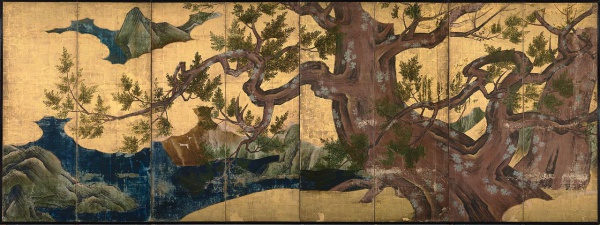Facts About Cypress Trees
"Cypress Trees" is a stunning folding screen widely attributed to Kanō Eitoku, a pivotal figure in the Kanō school of Japanese art. This masterpiece originates from the Azuchi-Momoyama period and is now proudly displayed in the Tokyo National Museum as a National Treasure.
The screen comprises several panels, a typical feature in Japanese interiors where such screens were used to divide spaces. The painting is a gorgeous blend of polychrome and gold, depicting a majestic cypress tree set against a backdrop of golden clouds and a deep blue pond. In Japanese culture, the cypress tree symbolizes longevity, adding a layer of profound meaning to the artwork.
While Kanō Eitoku is traditionally credited with this piece, some theories suggest that his younger brother, Kanō Sōshū, might have been the actual artist. Initially, these paintings were created as four shōji (sliding door panels), but they were later remounted, leading to some inconsistencies in the overall image.
After the Meiji Restoration, the paintings transferred from the Katsura-no-miya family to the Imperial Household and were eventually designated as national treasures. Today, they remain a beautiful testament to the rich history and cultural heritage of Japan.
